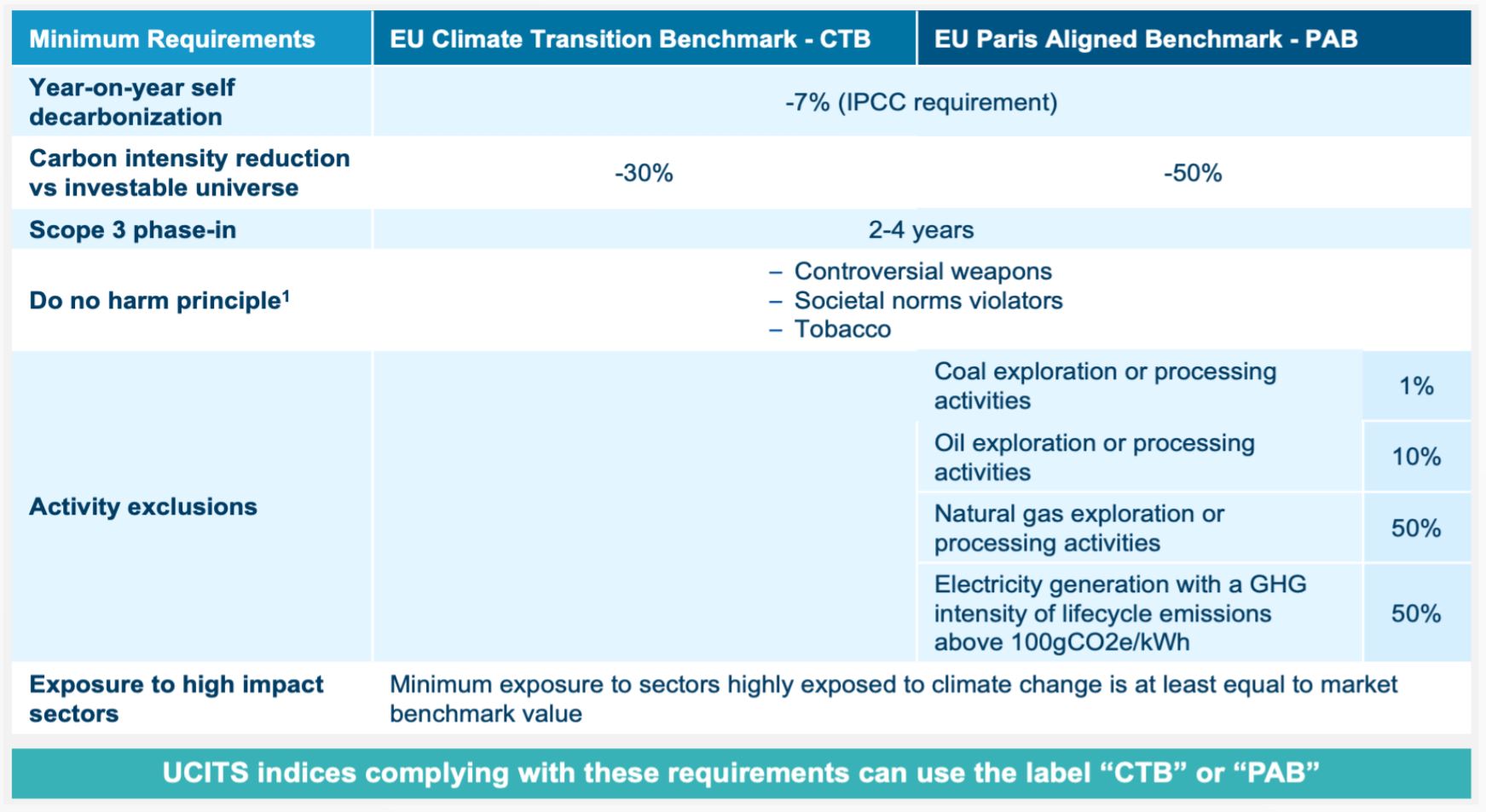The climate change ETF landscape in Europe is already evolving at a rapid pace as more investors start to consider environmental factors within their portfolios, however, there are a number of challenges that should be addressed if the European Union’s climate benchmarks are set to have the positive impact they have set out to achieve.
As the planet begins to warm up, the need for investors to take the dramatic changes in the environment into account has become more serious over the past few years. Highlighting this, as pointed to in the survey review section, some 74.2% of respondents said they have considered climate within their ESG ETFs. Added to this, some 64.9% of investors revealed they are looking to align themselves with the Paris Agreement while 27.6% said “not yet” and just 7.5% said no.
How an ETF investor looked to achieve the impact required was a challenge until the EU’s Technical Expert Group (TEG) introduced two climate benchmarks; the Paris-aligned Benchmark (PAB) and the Climate Transition Benchmark (CTB) in September 2019, which were designed to directly align with the goals of the Paris Agreement.
The four main objectives of the climate benchmarks were to:
Allow a significant level of comparability of climate benchmarks methodologies while leaving benchmarks’ administrators with an important level of flexibility in designing their methodologies
Provide investors with an appropriate tool that is aligned with their investment strategy
Increase transparency on investors’ impact, specifically with regard to climate change and the energy transition
Disincentivise greenwashing
The two benchmark labels seek to achieve this on different trajectories, with the PAB targeting a 50% GHG reduction versus the investable universe and the CTB targeting 30% reduction. Both index labels also incorporate a 7% year-on-year reduction of the index carbon intensity.
With the direction of travel set by the EU and investors starting to demand climate solutions, index providers and subsequently, ETF issuers started launching strategies that tracked the two benchmarks at a rapid rate. According to data from Bloomberg Intelligence, there are now 21 ETFs offering exposure to the PAB and CTB benchmarks across six issuers; Lyxor, Amundi, Deka, Franklin Templeton, BlackRock and Tabula.
One key problem the benchmarks have addressed is around standardisation. With traditional ESG ETFs, investors are forced to align themselves with a certain data provider’s sustainable investment philosophy whose scores can be treated as proprietary information and therefore potentially difficult to understand. How to choose between MSCI and Sustainalytics, for example, is a challenge.
What the two benchmarks provide to investors is a standardised approach from the EU that sets a clear direction of travel for tackling climate change. This top-down approach that starts with the regulator should be seen as a welcome improvement for investors.
As Michael John Lytle, CEO of Tabula Investment Management, said: “The EU’s climate benchmarks are not perfect but they are a positive first step. We expect the landscape of climate investment to evolve dramatically in the next few years but, given the urgency of the problem, we need to start now and it is great that the EU has taken practical action.”
Decarbonisation challenge
However, despite the TEG’s best intentions, there are some challenges created by the benchmarks’ decarbonisation approach. The Paris Agreement aims to have zero carbon dioxide emissions by 2045-2080 and be climate-neutral by 2050.
With this aim in mind, the PAB and CTB benchmarks implement share-of-revenues exclusions targeting the fossil fuel industry and high carbon intensity electricity generation. This means the benchmarks promote the outright divestment of high carbon intensity assets crucial to the transition towards global net-zero emissions through a number of minimum requirements (Chart 1).
Chart 1: Minimum standards for EU Climate Benchmarks of Listed Equity

Souce: Amundi
To further illustrate this, the Amundi MSCI Europe Climate Paris Aligned PAB UCITS ETF (PABE) has a 0.03% weighting to the energy sector, a low allocation to a sector that will be important in meeting the Paris Agreement's 2050 targets.
Frédéric Ducoulombier, ESG director at Scientific Beta, commented: “PAB activity exclusions de facto exclude the coal and oil and gas sectors along with the majority of electricity producers. While the number of oil and gas companies boldly transitioning is extremely limited, the exclusion of the industry does little to encourage transition leadership in this key sector.
“A wider-ranging compatibility issue is created by the sharp, benchmark-relative, portfolio-level reductions in ‘carbon intensity’ that promote portfolio decarbonisation at onset through divestment of high carbon intensity assets rather than continued investment and incentivising of transition.”
Climate change ETFs: What is all the fuss about?
Despite the evident limitations to their approach to decarbonisation, there is still time for the TEG to adapt. It is important to remember climate change ETFs are still very much in their infancy and investors should prepare for the space to develop even more than it has already over the next few years.
This article first appeared inETF Scan: Investigating the rise of ESG, a six-month investigation from ETF Stream and Amundi into the ESG ETF landscape









